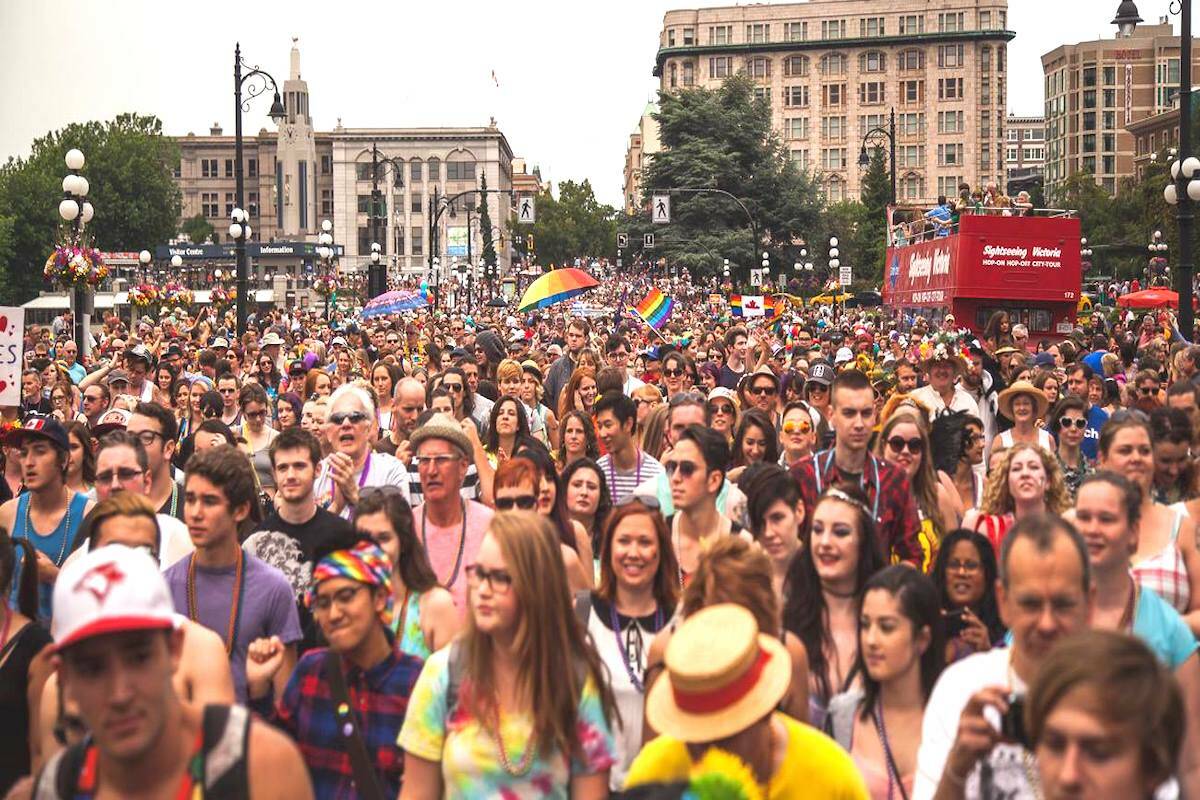Today’s youth has a wider array of language tools and a better understanding of gender diversity than Britton Kohn did in their teen years, but there’s still room to improve how people understand themselves and their neighbours.
Statistics Canada’s first-ever census data on the transgender or non-binary population found Greater Victoria had the country’s largest proportion (0.75 per cent) of individuals identifying with those groups.
“I feel a lot safer and seen and understood in Victoria than I do in my hometown of Calgary,” Kohn, who is non-binary, told Black Press Media. “Language is powerful and education is powerful and that’s something I think Victoria has started to share.”
But the figures highlight a gap, the Victoria Pride Society president said, and that more education is needed in communities across Canada – especially for young folks as trans youth continue to face disproportionately high suicide rates.
“Gender expression, gender diversity is there and it’s a part of us,” Kohn said, adding that by providing education “you’re allowing a person to really learn more about themselves in a much richer way.”
Replacing the census “sex at birth” category, which StatsCan said will be used to compare historical data, with a host of gender options, and a write-in space, would more accurately allow people to say who they are, Kohn said.
READ: New census data offers snapshot of Canada’s transgender population for first time
The census also found Gen Z and millennials are three to seven times more likely to identify as trans or non-binary than other generations. Younger generations may be more comfortable reporting their gender identity than older generations as there’s been more been social and legislative recognition of transgender, non-binary and 2SLGBTQIA+ people, StatsCan said.
Kohn recalled the discomfort they felt being called a tomboy growing up and feeling shame for not wanting to wear a dress. They said a simple fix to helping kids feel like they belong would be including gender and racial diversity in the books they read.
“From a young age, (books) should really reflect society and for parents that think that all of a sudden influences their kid to be gay or be trans – I want to confirm it doesn’t work like that,” Kohn said.
“It’s just the education around allowing a little human to express themselves, whatever that looks like, and to nurture that …it’s allowing the kid to be who they are.”
Queer and trans people often lack resources that help them accept who they are or process the harsh realities they’ve faced, said Victoria’s Kara Nystrom. For her, that included facing abuse from family when she was young – while being aware she was female but felt stuck in a male body – and being threatened in the workplace later in life.
“What would you feel like if you’ve been shown through media (and) through society that you don’t fit, that you don’t count, that you don’t have a voice, that you don’t have a place – and then try to achieve something,” Nystrom said. “How are you going to do that, how are you going to feel about yourself, your internal dialogue is just full of self-hate.”
It’s what led to her life-coaching service, Karadical Transformations, which focuses on the 2SLGBTQIA+ community.
“That’s my family and those are the people I want to spend the bulk of my time lifting up and helping them find their own voice.”
She described it as a two-person support group where she tries to create a safe, kind and compassionate space so people can open up and achieve some “radical self-love.”
“It strengthens our community, it strengthens the individual. Generations from now, people will be able to transform how we’re seen and how we’re perceived,” Nystrom said.
Kohn said while places like the Island Sexual Health Clinic use a model that makes gender diverse folks feel comfortable, healthcare centres in Victoria are an area where the region could strive to improve. It’s a hard ask for the COVID-19-exhausted system, Kohn admitted, but even just some simple language changes can go a long way. They remember medical appointments where staff made them uncomfortable, but others when just having gender boxes to check beyond just male and female made them feel hopeful.
“Conversation and having dialogue means that there’s room for change and growth to happen,” Kohn said.
“We’re going to get it wrong sometimes and that’s OK as long as we’re doing the work to get it right.”
READ: ‘A queer, feminine body against the world:’ A Victoria woman’s vision for Miss Health and Fitness
jake.romphf@blackpress.ca. Follow us on Instagram.
Like us on Facebook and follow us on Twitter.

